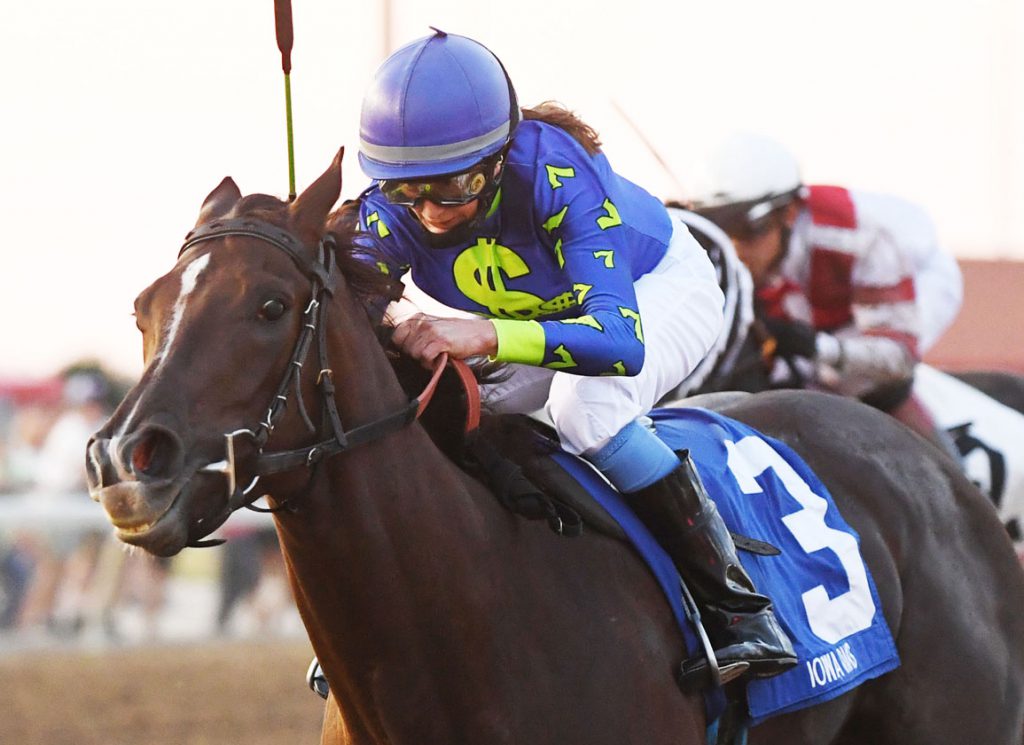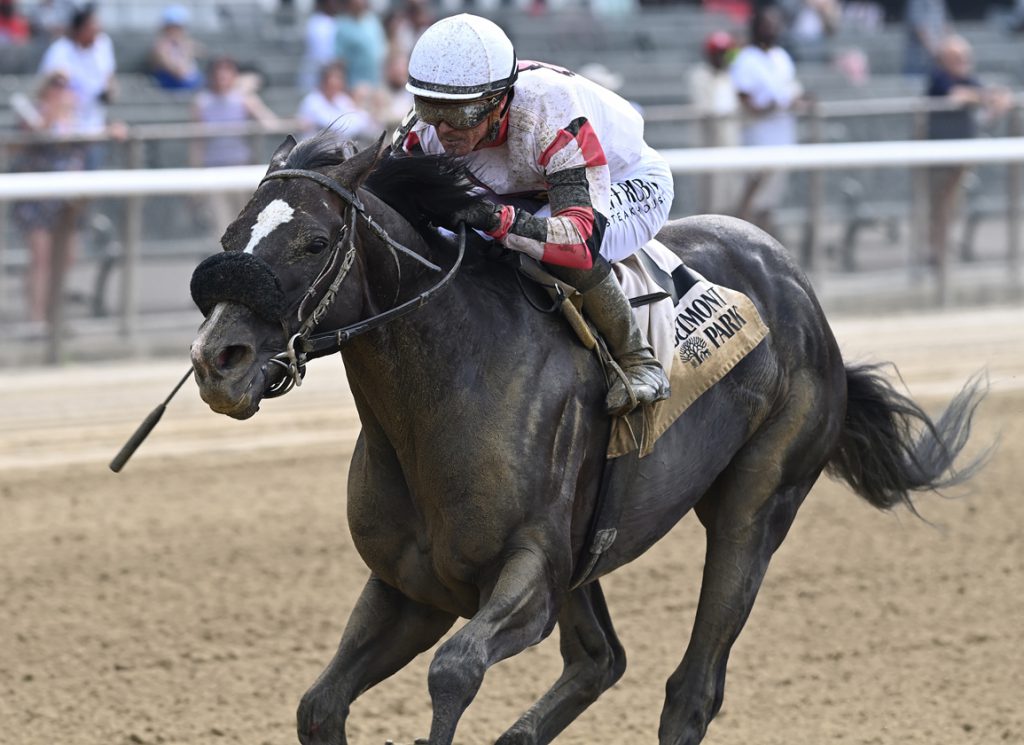It's often been said that, no matter how hard the sport works to become safer, there will never come a time when there are zero fatalities. Unfortunately, that's probably true. But at the recently concluded Del Mar meet, not a single horse suffered a fatal breakdown during a race. Not once did a horse break a leg, crumple to the ground and then have to be euthanized behind a curtain blocking the view of a horrified public, the story making its way into the newspapers or the local news and on to PETA's list of reasons why horse racing should be banned.
(One horse was injured during a dirt race, had to be operated on and, five days after the accident, had to be put down due to complications. Three horses died during morning training due to traditional musculoskeletal injuries.)
In a meet where there were plenty of highlights, Arabian Knight (Uncle Mo) winning the GI Pacific Classic, the brilliant victory by Tamara (Bolt d'Oro) in the GI Del Mar Debutante, the dominance of Jockey Juan Hernandez, nothing was more important than Del Mar's safety record. These are the types of stories racing so badly needs in the midst of so many other tracks having nightmarish meets when it comes to breakdowns and these are the types of numbers that give you hope other tracks can get their fatality levels down to Del Mar levels.
And the story was much the same in 2022. There was not a single fatality that occurred during a race that year either. Officially, Del Mar had two equine deaths in 2022 that were once again the results of horses being injured in race only to be put down a few days later after attempts to save their lives were unsuccessful. Del Mar has not had a fatality during a race since 2021, when one horse died during a 2-year-old dirt race.
“We've been very fortunate and have put in a lot of hard work,” said Del Mar President Josh Rubinstein. “This is more a California story than just a Del Mar story. The numbers at Santa Anita have also been very good and both tracks have benefitted from the efforts from the CHRB. The biggest thing is there's clearly been a culture change and our horseman and horsewomen have really embraced the reforms we've implemented, which hasn't always been easy. Without their buy-in we wouldn't have gotten to where we are now.”
This was not always the case. Before there was Santa Anita 2019 when 30 horses had to be euthanized over a six-month period, Del Mar was having some high-profile problems of its own. When it took out its synthetic track after the 2014 meet, the number of fatalities per 1,000 starts jumped from .69 to 2.28 But it was not until the 2016 meet where the numbers went completely south and turned Del Mar into what may have been the deadliest racetrack in the country. During 54 days of racing, there were 12 fatalities during racing and they occurred at a rate of 3.01 per 1,000 starts. The national rate was 1.54 per 1,000 starts. Worse yet, 11 horses broke down during training hours, giving Del Mar 23 total fatalities for the meet that lasted just 54 days.
“You hate for this to happen anywhere but when something like this happens in California there is a massive spotlight on you, something you don't want to see. It was difficult. It really forced us to look at every single piece of the racing operation. We spent a lot of long days and nights figuring out how we could improve and get better, starting with 2017. Fortunately, we have continued in the right direction.”
Del Mar management realized that something had to be done and that if the numbers did not improve that could have a cataclysmic effect on the sport. Much of the reforms now seen throughout California, began at Del Mar after the 2016 meet. The number of fatalities per 1,000 starts dropped to 1.50 for 2017. Since, that number has been .79, .62, .28 and .56. Depending upon how the case of the horse who died a few days after surgery is handled, the 2023 number could be zero.
The California/Del Mar play book is to have veterinarians examine a horse again and again and again before they are given the green light to race.
“There are all the veterinarian checks and the things that go into getting a horse ready to go on race day,” Rubinstein said. “With all the vet checks, the CHRB they've been terrific. While we do have our own track vets that oversee morning training and assist with the exams, the majority of the vet checks are by the CHRB. They have been terrific to work with as have industry stakeholders like the TOC. It costs more to get a horse to the races with these reforms and checks and for the most part the owners have been very much on board. It really has been a team effort.”
After 2016, the Del Mar team also realized that vet checks alone would not be enough.
Dennis Moore was brought in to oversee the main track and John Beggin was hired to oversee the turf course.
“We believe we have the best in the business in our main track superintendent, Dennis Moore, and John Beggin, who handles the turf course,” Rubinstein said. “They've both done a terrific job. On the main track, Dennis puts in a tremendous amount of hard work in the off season getting the track ready. Every day, he's looking at different levels, compaction levels, moisture levels. He works to insure the track is dialed in to be consistent, safe and fair. You talk to the horsemen and overall they are extremely pleased with main track and turf course here.”
Most tracks don't have the resources Del Mar has and can't afford to hire extra veterinarians, expert track superintendents or to put in such things like PET scans. But that doesn't mean they can't do better. Though the rate of breakdowns in this country is still way too high, Del Mar has proven that no track should settle for the status quo. They went from one of the most dangerous tracks in the country to one of the safest and all it really took was some effort and determination to solve an awful problem. They've done so well that perfection seems like an attainable goal.
At Gulfstream, Playing the Name Game
You might have noticed that trainer Jose Di Angelo won both divisions of the Florida Stallion S. Saturday at Gulfstream, taking the filly version with Welcome Back (Adios Charlie). Three races later he won the division for males with a horse named Bentornato (Valiant Minister). Bentornato means “welcome back” in Italian. The horses are owned by different owners, and the names are simply a coincidence.
“With Bentornato, I picked the horse out when he was at a baby sale at OBS (where he was bought for $45,000),” Di Angelo explained. “The owner pinhooked the horse and the guy that bought him from him returned the horse. That's why he named him Bentornato or Welcome Back. The other horse was always named Welcome Back.”
Saratoga Horse of the Meet
Each year Del Mar announced its “Horse of the Meet”, a long-standing tradition that takes place at the conclusion of the meet. It was Pacific Classic winner Arabian Knight. The voting is conducted among a panel of experts. How about Saratoga doing the same thing, bestowing what would be an important honor of the most outstanding horse at the sport's most important meet? My vote would have gone to Casa Creed (Jimmy Creed), but strong cases could have been made for Echo Zulu (Gun Runner) and Arcangelo (Arrogate). In addition to handing out the award, how about giving a cash prize to the groom, hotwalker and exercise rider of the winner. Say $25,000 each, money that can go a long way toward helping the unsung heroes of the backstretch.
The post The Week In Review: Can A Racetrack Have A Perfect Safety Record? Del Mar Is Getting Close appeared first on TDN | Thoroughbred Daily News | Horse Racing News, Results and Video | Thoroughbred Breeding and Auctions.


